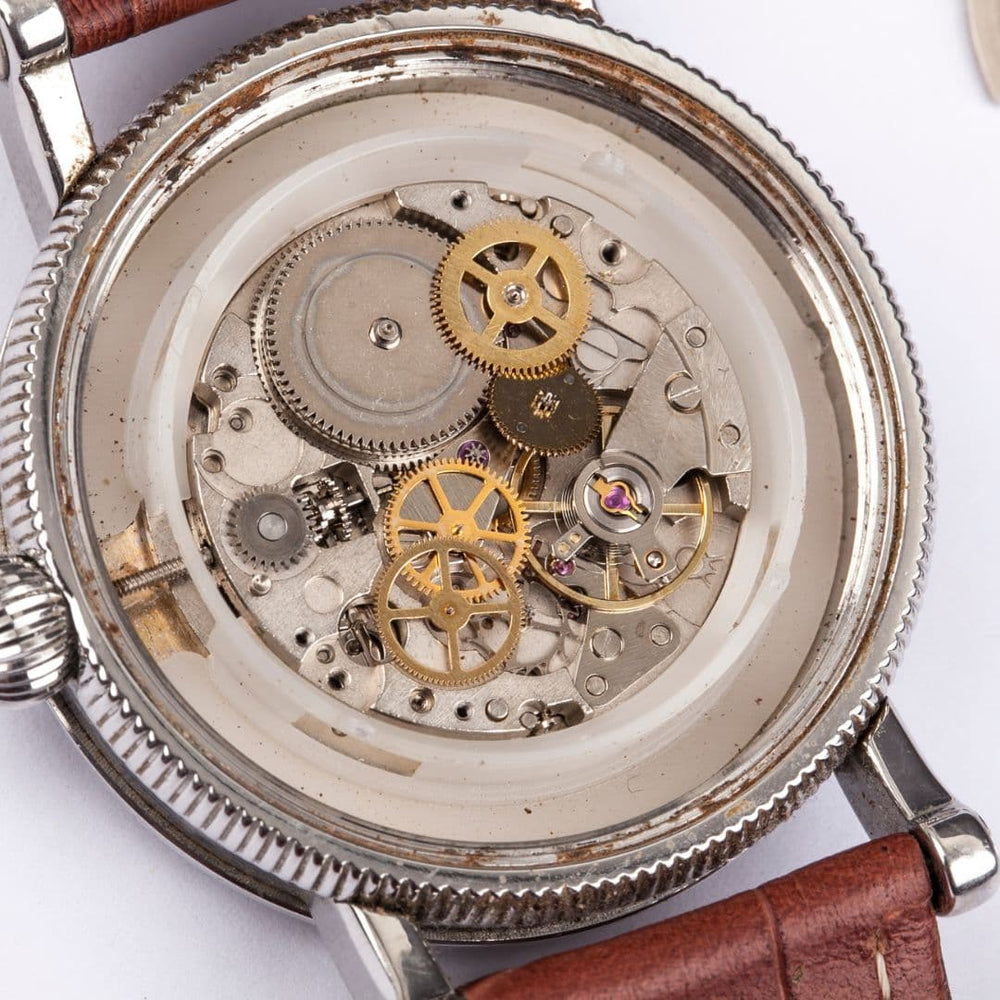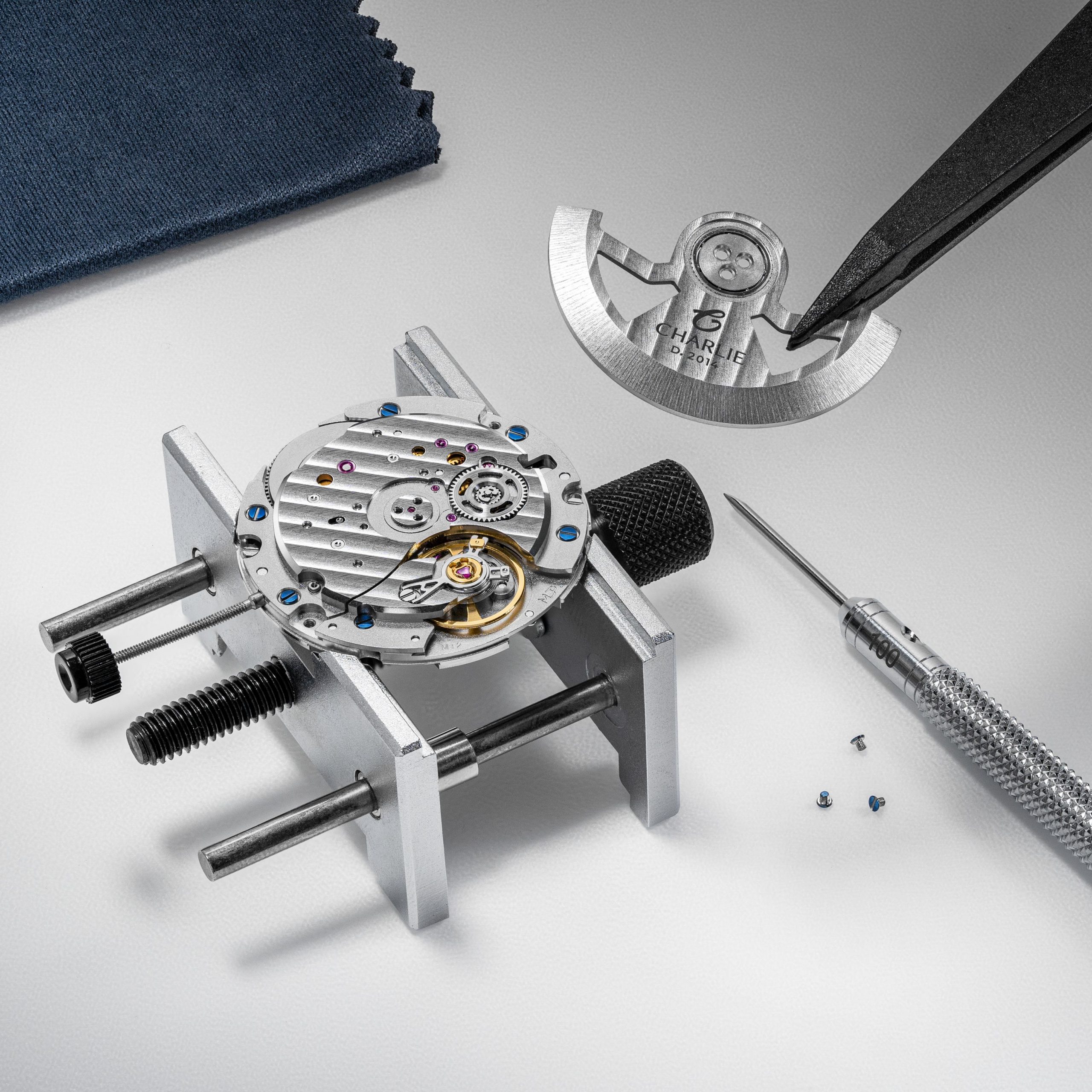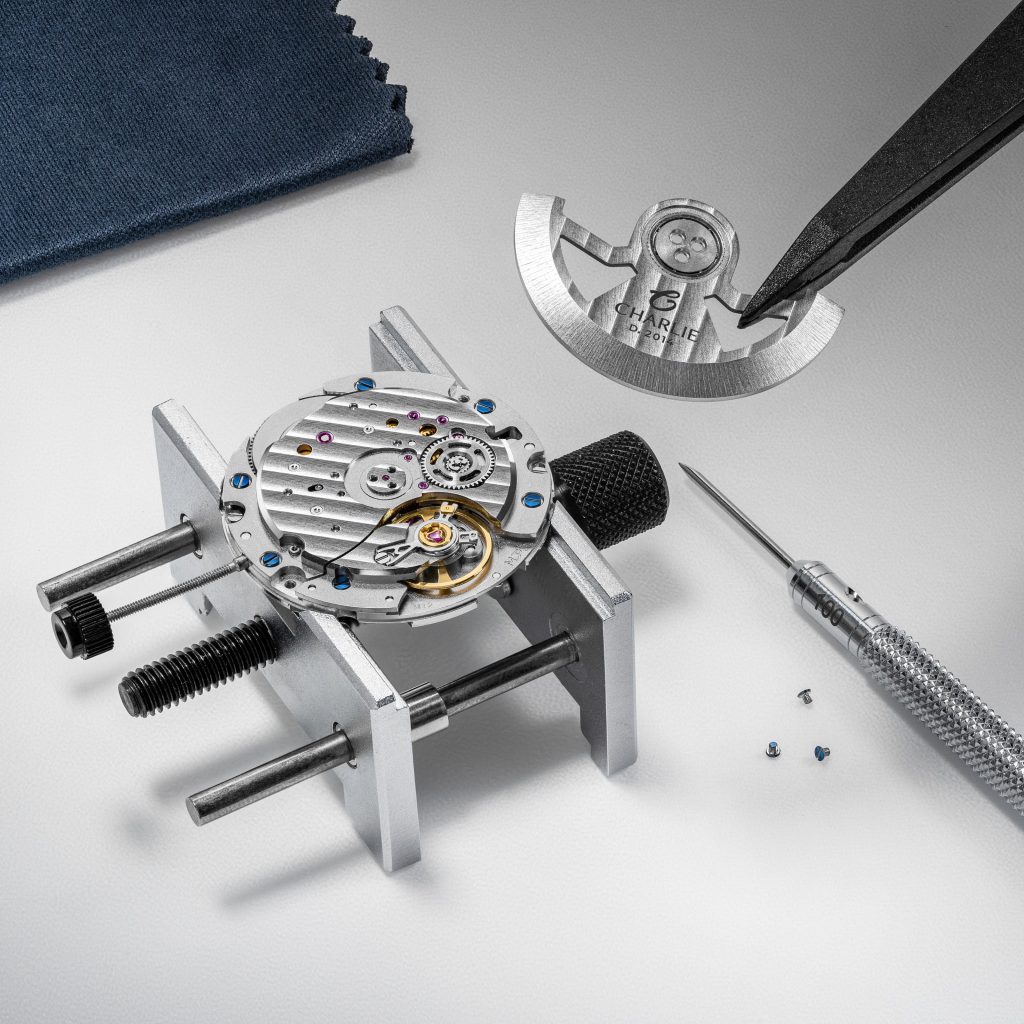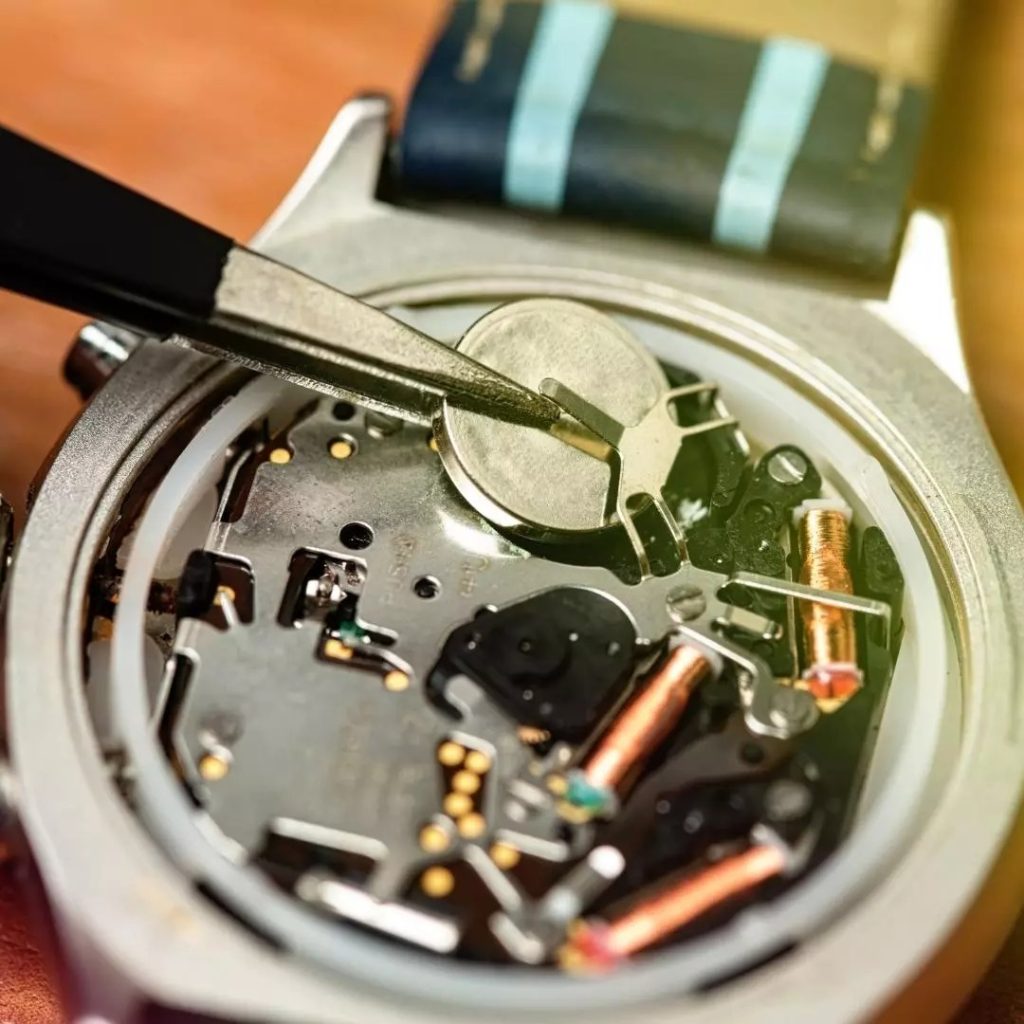Introduction
Mechanical vs Quartz watch – The world of watchmaking is a fascinating blend of artistry, engineering, and innovation, resulting in timepieces that are not only functional but also serve as expressions of style and craftsmanship. Among the myriad types of watches available today, mechanical and quartz watches stand out as two of the most prominent categories. Each type has its unique characteristics, advantages, and target audiences, making them integral to the modern watchmaking industry. This article delves deep into the differences between mechanical and quartz watches, exploring their craftsmanship, accuracy, and collectibility.
 Understanding Mechanical Watches
Understanding Mechanical Watches
Craftsmanship and Engineering
Mechanical watches are renowned for their exquisite craftsmanship and intricate engineering. They are powered by a complex system of gears, springs, and levers that work together to keep time. The heart of a mechanical watch is its movement, often referred to as a “caliber.” Each caliber consists of several hundred tiny components, meticulously assembled by skilled watchmakers. These artisans often employ traditional techniques that have been passed down through generations, resulting in timepieces that are not only functional but also works of art.
Mechanical watches can be further divided into two categories: manual and automatic. Manual mechanical watches require the wearer to wind the crown to tighten the mainspring regularly, while automatic watches feature a rotor that winds the mainspring through the natural motion of the wearer’s wrist.
Aesthetic Appeal
The beauty of mechanical watches is in their visible inner workings. Many high-end models feature exhibition case backs that allow wearers to admire the movement’s intricate mechanics. The craftsmanship in mechanical watches often extends beyond the movement; features like ornate dials, luxurious materials, and meticulous finishing further enhance their aesthetic appeal.
Collectibility and Value
Mechanical watches hold a prominent position in the collector’s market. Limited editions, vintage pieces, and watches from prestigious brands like Patek Philippe, Rolex, and Audemars Piguet have a strong following among collectors. Their value can appreciate over time, making them not just timekeepers but also investment pieces. Unique craftsmanship, brand heritage, and limited availability contribute to their collectibility.
Understanding Quartz Watches
Precision and Accuracy
Quartz watches, introduced in the late 20th century, revolutionized the watchmaking industry by offering unprecedented accuracy and reliability. Powered by a battery, quartz movements utilize the piezoelectric properties of quartz crystals, which oscillate at a consistent frequency when electrified. This allows quartz watches to maintain accuracy to within a few seconds per month, far surpassing that of most mechanical movements.
Simplicity and Durability
The construction of quartz watches is typically less complex than that of mechanical watches, containing significantly fewer parts. This simplicity translates into greater durability and lower maintenance costs. The absence of numerous moving parts means that quartz watches are generally less susceptible to the rigors of daily wear and tear, making them practical options for everyday use.
Wide Range of Styles and Affordability
Quartz watches are mass-produced by various brands, making them widely available and often more affordable than their mechanical counterparts. This accessibility has led to a vast array of styles and designs, catering to different tastes and preferences. From sporty chronographs to elegant dress watches, quartz timepieces can be found in almost every conceivable design.
Comparing Accuracy
When it comes to accuracy, quartz watches significantly outperform mechanical watches. While high-end mechanical watches can achieve impressive precision of about +/- 5 to 10 seconds per day, many quartz watches can maintain accuracy to within a few seconds every month. This precision is one of the main attractions for consumers who prioritize functionality over traditional craftsmanship.
However, enthusiasts often argue that the charm of a mechanical watch lies in its imperfections and uniqueness. Every mechanical watch operates slightly differently due to variables in assembly and construction, creating a connection between the wearer and the watch as a living piece of art.
The Craftsmanship Factor
While quartz watches excel in precision and reliability, there’s no denying that mechanical watches hold a superior position when it comes to craftsmanship. The artisanal skill involved in crafting and assembling a mechanical movement is irreplaceable. Brands that produce high-end mechanical watches often highlight their dedication to traditional watchmaking techniques, adding a layer of heritage and prestige that resonates with collectors and enthusiasts.
Finishing Techniques
The finishing of components in mechanical watches, such as polishing, engraving, and decoration (e.g., guilloché), plays a significant role in their market value. High-end brands may use techniques such as Côtes de Genève (Geneva stripes) and perlage to enhance the aesthetic appeal of their movements, showcasing their commitment to engineering excellence.
Collectibility and Market Trends
The watch collecting community has witnessed a surge in appreciation for both mechanical and quartz watches, each attracting different demographics. Mechanical watches are often seen as investments and heirlooms, with enthusiasts willing to spend substantial sums on rare pieces. Brands like Rolex have cultivated a devoted following, with certain models commanding astronomical prices at auctions.
Conversely, quartz watches have emerged as popular collectibles in their own right. Vintage models, especially those from brands like Seiko and Swatch, have garnered significant interest, demonstrating that both mechanical and quartz watches can carve out niches in the collecting world.
Mechanical Watches: The Art of Craftsmanship
Mechanical watches, often described as masterpieces of artisanal craftsmanship, are celebrated for their intricate designs and the skill required to produce them. Each mechanical timepiece is powered by a complex assembly of gears, springs, and levers that work in harmonious precision. The traditional Swiss watchmakers have elevated this craft to a form of art, with brands like Patek Philippe, Audemars Piguet, and Vacheron Constantin frequently mentioned among the finest in the industry.
The Complexity of Mechanics
At the core of a mechanical watch is the movement, which can either be manual or automatic. Manual watches require the wearer to wind the crown regularly, whereas automatic watches utilize the kinetic energy from the wearer’s wrist movement to wind the mainspring. The craftsmanship involved is often a multi-generational legacy, passed down through families or prestigious institutions.
Aesthetic and Emotional Appeal
Beyond their functionality, mechanical watches possess an aesthetic quality that appeals to collectors and enthusiasts alike. Moreover, the mechanical watch often evokes an emotional connection—each tick of the second hand carries with it the weight of human skill and history, making the watch not merely a tool for measuring time but a storytelling medium steeped in tradition.
Quartz Watches: The Revolution of Precision and Affordability
On the other side of the debate sits the quartz watch, a symbol of the technological revolution in horology. Introduced in the late 1960s, quartz watches transformed the industry by offering unmatched accuracy, durability, and affordability. Brands like Casio, Seiko, and Citizen led the charge in popularizing these timepieces, making reliable timekeeping accessible to the masses.
Precision and Functionality
Quartz watches operate based on a simple principle: they use an electronic oscillator regulated by a quartz crystal to keep time. This mechanism allows quartz watches to outperform mechanical watches in accuracy—often within seconds per month compared to the mechanical variants that can drift by minutes. Furthermore, quartz movements are less sensitive to changes in temperature and position, making them ideal for a more fast-paced lifestyle where reliability is paramount.
Affordability and Accessibility
One of the most significant advantages of quartz watches is their affordability. Mass production techniques have driven down costs, allowing consumers to purchase high-quality and functional timepieces without breaking the bank. This lifeline to the world of horology has democratized access to timekeeping technology, with quartz watches becoming ubiquitous across cultures and demographics.
A Crossroads of Personal Values
The debate between mechanical and quartz watches is not merely about the timepieces themselves but reflects deeper values and personal connections to timekeeping.
Connection to Heritage
For many enthusiasts, wearing a mechanical watch is an affirmation of craftsmanship and a connection to heritage. These timepieces resonate with those who appreciate history, tradition, and the artistry involved in horological creation. They often evoke a sense of pride and status, serving as heirlooms passed down through generations.
Emphasis on Functionality
Conversely, quartz watches appeal to those who prioritize practicality. They represent the convenience of modern life and the importance of functionality over form. In an age where speed and efficiency often reign supreme, quartz watches serve the global populous who seek reliable timekeeping without the frills of intricate craftsmanship.
The Best of Both Worlds
Interestingly, the lines between these two worlds are beginning to blur. Some mechanical-watch brands now incorporate quartz technology in their offerings, producing hybrid models that ensure accuracy while maintaining artisanal principles. Additionally, luxury watchmakers have started developing quartz movements that embody the meticulous standards of mechanical craftsmanship, allowing consumers to appreciate both precision and artistry.
Conclusion
In the debate between mechanical and quartz watches, the superiority of one over the other ultimately lies in the values and preferences of the wearer. Mechanical watches represent a tradition steeped in craftsmanship, artistry, and heritage, while quartz watches offer unparalleled accuracy and practicality. Both types have carved out essential roles in the modern watchmaking industry, catering to diverse tastes, lifestyles, and collecting habits.
Watch enthusiasts and collectors can appreciate both worlds; the tactile charm of winding a mechanical watch and the precision of a quartz watch each provide unique experiences. As watch technology continues to evolve, both mechanical and quartz watches will hold significant places in the hearts of horology aficionados, ensuring the craft of watchmaking remains alive and relevant for generations to come.


